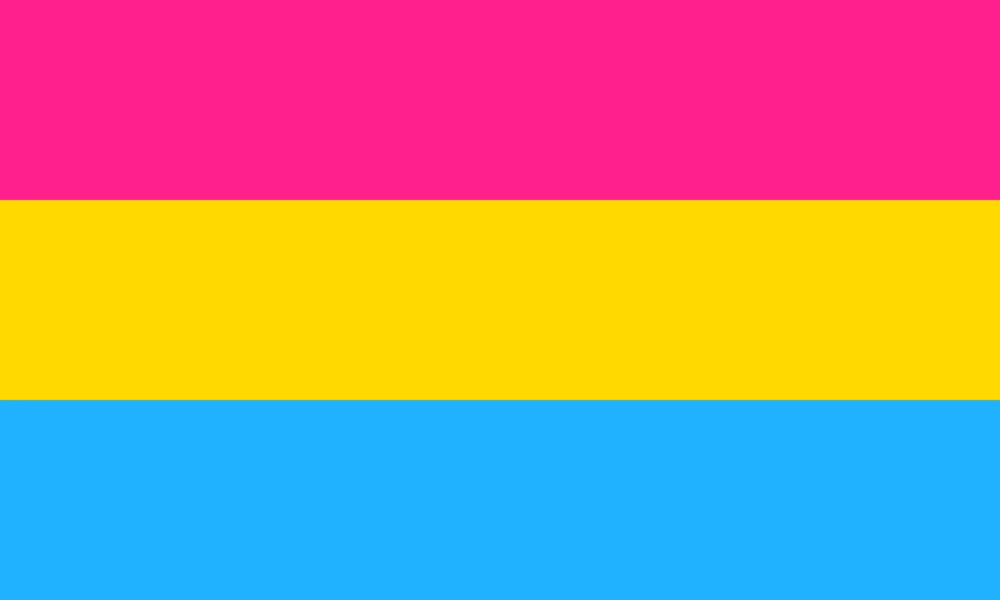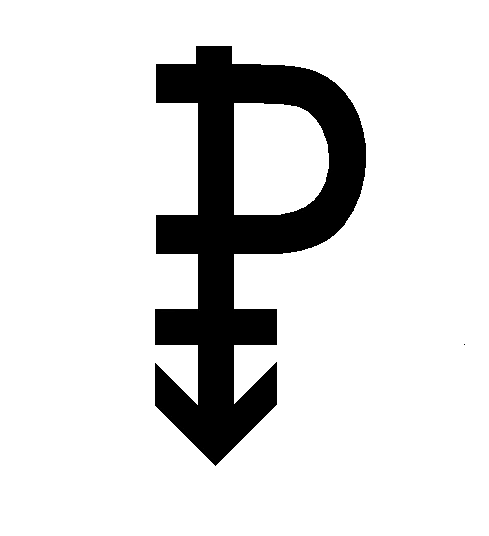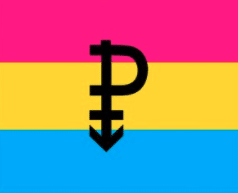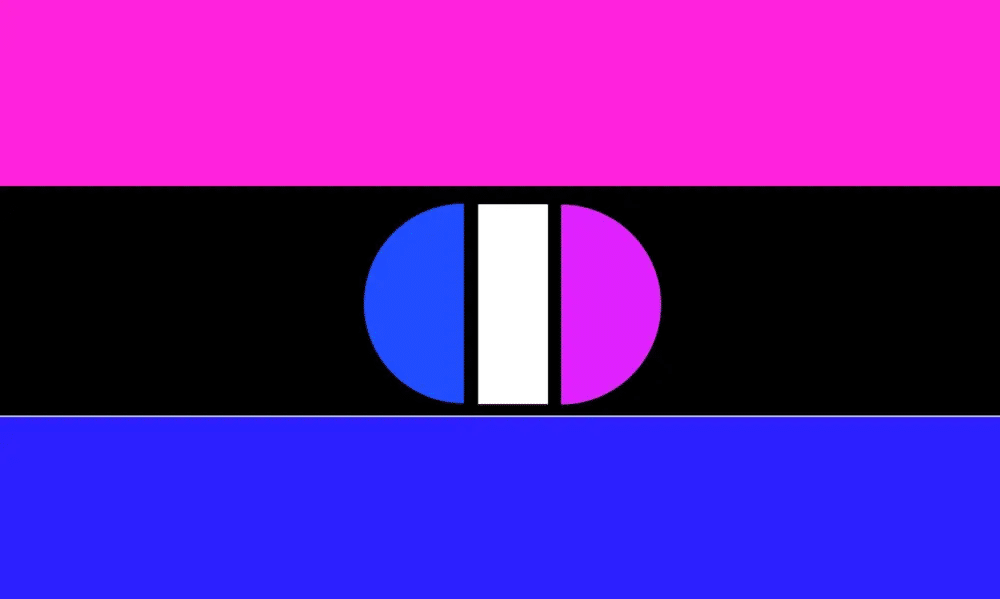Pansexual – What is it? What does it mean?
 Pansexual flag
Pansexual flag
Pansexual means that a person experiences sexual or romantic attraction to people regardless of their gender identity. People who identify as pansexual may be attracted to any gender on the sexuality and gender spectrum.
Pansexual people are attracted to people of multiple genders. Some describe this sexual orientation as gender blind because gender is not a factor in pansexual individuals’ sexual attraction to people. Pansexual people may be of any gender identity.
Some define pansexuality as a sexuality which is an umbrella term for sexual attraction to more than one gender. There are people in the bisexual community that believe it falls under the bisexuality umbrella. Pansexual is considered more inclusive than the term bisexual since pansexual people are attracted to people outside the gender binary.
Table of Content
Terminology
The word pansexual means all sexualities. The prefix pan- comes from the Greek word meaning all or every. Other words that describe similar sexuality are omnisexual and polysexual. They do not mean the same thing as pansexual but can be used to refer to pansexuals.
In 2018 Marriam-Webster dictionary put the term pansexuality on its list of words of the year. According to the dictionary, the term pansexual means:
“of, relating to, or characterized by a sexual or romantic attraction that is not limited to people of a particular gender identity or sexual orientation”.
Pansexuality is a sexual attraction to a person of any gender. This means that people who identify as pansexual are attracted to people of different genders. A pansexual person may experience emotional and sexual attraction to cisgender people, intersex people, nonbinary people as well as transgender people.
It is important to note that pansexual people are attracted to people of all genders and sexualities. This means they are not “attracted to everything” so paraphilias are out of the question here. The term pansexual describes consensual sexual behavior between adults.
History
Pansexuality has a long history as a term. Merriam-Webster says the hybrid word pansexualism dates back to 1914. The word pansexual was translated to German as pansexualismus in Freud’s work Group Psychology and the Analysis of the Ego. Some say Freud actually coined the term.
Pansexual became a common term to describe attraction in the 70s. It means that pansexuals were quite an active part of the LGBTQ+ communities movement for equal rights. The term emerged as a description for sexual identity in the 80s.
Pansexuality eventually solidified itself as sexual identity in the late nighties to include trans and nonbinary folks. Today young people identify more often as pansexual. An international holiday marking Pansexual and Panromantic Awareness day is on May 24. The goal is to raise awareness and celebrate the diverse identities.
Differences
Pansexuality is frequently compared to other identities. Among them are omnisexuality, bisexuality, polysexuality, and more. Pansexual and omnisexual people tend to use the words to talk about their orientation interchangeably. Some may choose to identify as both while others only prefer to use one.
A pansexual person does not see a difference. Pansexual people are attracted to people regardless of gender. Though that does not mean that a pansexual person cannot have a gender preference at all. Pansexual folks often say their attraction to people has absolutely nothing to do with a gender that is why it is gender blind.
A pansexual person may be attracted to others no matter their gender but that does not mean they are attracted to all people.
Pansexuality Vs. Bisexuality
Often pansexuality and bisexuality go hand in hand. There are some that find it difficult to distinguish between bisexuality and pansexuality. Many view pansexuality as an identity that is attracted to the full spectrum of genders. Bisexuality is often associated with being a gender binary word that states the attraction is for only two genders. This is why bisexuality is often seen as an identity avoided by non-binary and gender fluid people who prefer to use pansexual over the word bisexual.
There are times pansexual is used interchangeably with the term bisexual. Though typically people who are bisexual have sex with two genders. That said, a pansexual person may say their sexual orientation falls under the bisexuality umbrella.
A standard definition of bisexuality says that a bisexual person will only experience romantic and sexual attraction to men and women. Many bisexual people say they are indeed only attracted to men and women. Yet to many bisexuality means being attracted to two or more genders. In fact, the bisexuality umbrella includes attraction to men and women, as well as attraction to people regardless of gender.
There are individuals who identify as bisexual and feel that their partner’s gender, biological sex, and sexual orientation are not the determining factors in a bisexual relationship.
The difference is that many prefer the term pansexuality because they say it is a much more inclusive term to describe sexual identity. Bisexual and pansexual are often used as synonyms but pansexuality is its own sexuality in its own right.
Pansexuality allows people to express attraction in a variety of ways. The term pansexuality allows room to show that there are more categories beyond male and female. Individuals who identify as pansexual have an attraction to people regardless of gender and sexual identity.
Some bisexual people dispute the notion of being solely attracted or only having sex with two genders. Bisexuality also stretches beyond the attraction to the binary sex. The term bisexual may also be defined as attraction to multiple genders. Many individuals that identify as bisexual also claim to be attracted to people regardless of gender or sex.
A bisexual umbrella may be used to describe a wide variety of sexual identities including but not limited to bisexual, pansexual, queer, genderfluid, omnisexual, polysexual, and more. According to Bisexual Resource Center whom Taimi works with during Bisexual Health Month which aims to provide medical advice and raise awareness of health issues bisexual people face:
“bisexuality is an umbrella term for people who recognize and honor their potential for sexual and emotional attraction to more than one gender”
Some people assume bisexuality is not inclusive enough and is limited to the attraction of people either of the same gender or the opposite gender.
Several peer-reviewed studies published in recent years compared bisexual and pansexual identities. In a 2019 medically reviewed study based in New Zealand researchers found that young people identify as bisexual much less than pansexual. According to that same study, pansexual people also reported higher levels of distress than other identities. People who identify as pansexual were a much more diverse group including many different genders as well as transgender and nonbinary people.
In another medically reviewed study pansexual identity resonated more with non-heterosexual women and people who identified as genderfluid, nonbinary, and transgender. Some scholars argue that pansexuality is a much better umbrella term than bisexuality. The argument is that pansexuality offers more overlap and extends much farther outside the gender binary.
Pansexual Vs. Omnisexual
These terms are often used as synonyms. Most people tend to use them at the same time. The standard definition of pansexual states that a pansexual person is not limited in choice to biological sex, gender, identity whereas an omnisexual person prefers to date diverse people regardless of their gender identity but noticing it.
No wonder so many people tend to confuse the two terms. Both pansexual and omnisexual mean all sexualities but in different languages. Pan prefix means all in Greek, Omni means all in Latin.
The key difference between the two is that pansexuality is the attraction to people regardless of their gender. Think about it as a pansexual person can date cisgender men, cisgender women, transgender men, transgender women, non-binary people, agender people without paying much attention to their partner’s identity. An omnisexual person will be attracted to a cis man, cis woman, trans man, trans woman, non-binary person, agender person but know very well what identity their partner is though not caring much about it.
Pansexual Vs. Polysexual
A great way to remember the distinction between pansexuality and polysexuality is to note the meaning of polysexuality. Unlike pansexuality which is a much more extensive definition that means attraction regardless of gender, polysexuality implies being attracted to people of two or more genders but not all genders. Think polyglot – someone who knows many languages but not all of them.
Polysexual people are not necessarily attracted to all genders. They like more than one, perhaps even more than two or three but definitely not all as implied by being pansexual. A partner’s gender is a factor when it comes to the attraction polysexual people experience.
Pansexual Vs. Demisexual
Pansexual people can also be demisexual. Some who identify as pansexual can have a demisexual orientation as well. This means that demisexual people may also label themselves as pansexual people.
Pansexuality is the ability to be attracted to people of all genders. Demisexuality focuses on the emotional bond to someone regardless of gender. Hence the attraction they may feel towards the person is unrelated to their identity.
Demisexual people only feel sexually attracted to someone when they have an emotional bond with the person. They can be easily attracted to two or more genders but have to have strong emotional ties with the person first. Demisexuals can identify as bisexual, straight, gay, pansexual, or any other gender on the spectrum. Demisexual people do not feel primary attraction rather they feel secondary attraction after establishing a strong emotional bond with a person.
Pronouns
Pansexuality includes a variety of genders. Cisgender, transgender, nonbinary, and other genders may all identify as having a pansexual orientation. Pansexuals may use many different pronouns like gendered pronouns she/her or he/him as well as neutral pronouns like they/them.
Pansexual people may also use the pronouns of their choice like xe/xem or ze/zir or ee/eem and many other ones out there.
So, it is always best to share your pronouns in conversation. Always use inclusive language and ask for the person’s pronouns. Please remember to never assume someone’s pronouns based on their style and expression.
Flag and Symbols
The pansexual flag is frequently seen at Pride events around the world. It was created in 2010. The flag has three distinct colors. These colors are pink, yellow and blue.
- Pink stands for women
- Blue for men
- Yellow for everyone outside the binary
The meaning is debated to this day with some choosing to use alternate pansexual flags to showcase their pansexual pride.
 Pansexual flag
Pansexual flag
A very common symbol that may be sometimes used to represent pansexuality is the letter P with an arrow and crossed tail.
- The cross of the tail represents the symbol for female sex
- The arrow represents the symbol for male sex
 Pansexual symbol
Pansexual symbol
The symbol is sometimes used together with a pansexual flag to showcase pansexual pride.
 Pansexual pride flag
Pansexual pride flag
How to Know if You are Pansexual?
If you feel the term pansexual fits you well and is the best way to describe your sexuality then feel free to use it! Only you can tell yourself what identity feels right.
Putting a label to your identity and orientation can often be a very positive experience. Identifying as pansexual may help you find a community of the same people who support and share your ideas and goals. But labeling your identity should not come under any pressure or cause mental distress. Rest assured that you do not have to stamp a label on yourself just because you can see beyond the sex assigned at birth.
Your pansexuality is valid regardless of you stating it to the world or not. You may choose to keep the info private and that is absolutely fine. If you think you are pansexual, start by asking yourself a few questions to determine whether pansexual is the correct label for you.
- Are you attracted to people without knowing their gender?
- What genders are you attracted to in general, can you name them, or doesn’t really matter?
- Who is your ideal partner, does their gender play a role?
- How does pansexual feel to you compared to other terms?
Identities can shift and change. One person can have multiple sexual identities so do not feel limited to just one term. You can identify as pansexual but also include other identities that feel right for you.
Some people view being pansexual as being open to loving all genders. Others say this leads to a stereotype that pansexual people are promiscuous and cannot secure long-term relationships.
Pansexuality is yours to claim if you feel that gender does not play a role in your attraction to people. To you, forming relationships with people has nothing to do with their gender. You do not care about their identity. Being pansexual does not equal being polyamorous. The potential of being attracted to people of any gender does not influence whether a person has multiple partners or not.
Pansexual people sometimes can be in straight-passing relationships. Their sexuality may be overlooked or even dismissed by others because of their partner’s cisgender and heterosexual identity. Pansexuals in these types of relationships may face mental health struggles due to their identity being unrecognized. Always keep in mind your pansexual identity is valid no matter what anyone else says.
It is very important to remember that there is no need to come out to your family and friends as pansexual if you do not feel comfortable doing so. Coming out as a pansexual person has to come at the time and place when you feel is best for you to share the news of your identity with your loved ones.
In some cases, coming out may help with aggression and frustrations in relationships. Coming out can have positive long-term effects on people’s mental and physical health. If you do choose to come out make sure you keep your and your partner’s safety a priority. Be careful not to out yourself or your partner unwillingly.
Supporting Pansexual People
If you feel like you want to do your part and show support for pansexual people you can start by doing the following:
- Research and educate yourself and others, there are many medically reviewed articles available online
- Join LGBTQ+ organizations and clubs
- Volunteer at LGBTQ+ events focusing on pansexuality
- Start a support group at work or school
- Raise awareness, waive LGBTQ+ and pansexual flag, speak out against injustice
There are also many organizations working with LGBTQ+ youth that focus on pansexuality. Some celebrities that recently came out as pansexual also have charities that they actively support. You can join the many communities under the hashtag on social media websites like Twitter and Reddit. You may also search for your local community groups that focus on working with people who are pansexual.
Your support can go a long way in terms of breaking the myths and misconceptions associated with pansexuality.
Gallery
An alternate version of the flag:
 Alternate pansexual flag
Alternate pansexual flag
Another alternate version of the flag:
 Another alternate version of pansexual flag
Another alternate version of pansexual flag
Share this post:
What do you think?
 Pansexual flag
Pansexual flag


